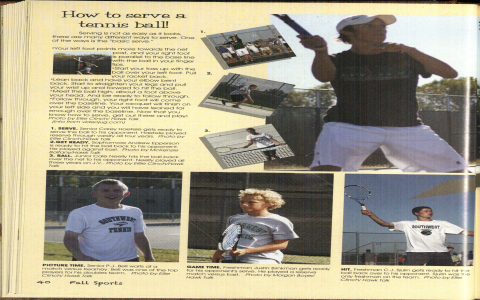Alright, let’s talk about my dive into this “J. Choi tennis” thing. It feels like ages ago, but I remember it pretty clearly, mostly because of the sheer frustration and, well, a tiny bit of enlightenment at the end. It all started when I was stuck in a rut with my game. You know how it is, you hit a plateau, and every match feels like a replay of the last one.
Someone at the club, pretty sure it was old Dave who’s always chasing the latest fads, mentioned this J. Choi. Said he had some revolutionary methods. So, I did what any desperate player would do: I went online. Found a bunch of articles, a few grainy videos. It wasn’t exactly a high-production-value setup, let me tell you. Looked more like someone’s backyard project than a pro coaching system. But hey, I was desperate.
My Brilliant Plan and the Gritty Reality
So, I decided, “Okay, I’m gonna commit to this J. Choi style for a solid two months.” I even bought this little e-book thing, supposedly written by one of his disciples. Cost me like twenty bucks, probably worth five.
The first thing I tried to implement was this weird grip change for the forehand. Choi’s theory, or what I could make of it, was all about generating topspin from a really unconventional wrist position. My first session felt like I was trying to swat flies with a frying pan. Balls were spraying everywhere. Seriously, I think I hit more fences than courts.
- Week 1: Pure chaos. My regular game went out the window. I was thinking so much about the grip and the swing path that I forgot how to, you know, actually play tennis.
- Week 2-3: Still awful, but with occasional flashes. Like, one shot in twenty would have this amazing dip and curve. Just enough to keep me hooked, the sucker that I am.
- Week 4: My elbow started to twinge. Big surprise, right? Twisting your arm like a pretzel usually does that. I had to ease off, which was probably for the best.
I remember one Saturday, I was out there, trying to practice this Choi serve. It involved this bizarre, almost dance-like wind-up. I must have looked completely unhinged. A couple of kids on the next court actually stopped their game to watch and giggle. Can’t blame them. I probably would’ve too.
The So-Called Breakthrough (or lack thereof)
After about six weeks, I wasn’t seeing the magic. My game was, if anything, more inconsistent. The “revolutionary” forehand was still mostly a prayer, and the serve was just… acrobatic, not effective. I was getting pretty down about it. All that effort, and for what? To look like a fool and play worse?
Then, I had this one practice session. I was so fed up, I just decided to forget all the J. Choi rules for a bit. I went back to my old forehand grip, but something had changed. Because I’d spent so much time thinking about wrist action and racket head speed for Choi’s stuff, I found myself naturally incorporating a little more whip into my normal stroke. Not his way, but my way, just… better.
It wasn’t the revolution J. Choi promised, not even close. But by trying to contort myself into his methods and failing, I accidentally stumbled upon a small improvement for my existing game. It was like trying to learn French and accidentally getting better at English grammar. Weird, right?
So, what did I take away from my J. Choi tennis adventure? Well, I definitely didn’t become a Choi disciple. Most of his stuff, for me, was overly complicated and just didn’t fit my natural game or body mechanics. It’s a good reminder that there’s no one-size-fits-all in tennis, no matter how fancy the name sounds.
I still have that twenty-dollar e-book somewhere on my hard drive. Every now and then I think about looking at it again, but then I remember the sore elbow and the giggling kids, and I decide, nah, I’m good. My game’s still a work in progress, but at least it’s my game now, not some awkward imitation of someone else’s theory. And that, I guess, is something.














